By Abbey Didier
Wildlife Biology and Conservation Major interning at the Wayne National Forest
Fungi and different mushrooms play a bigger part in the woods than most people realize or even think about. They help to decay rotting and fallen trees which recycles nutrients back to the ground and opens another spot for new plants to grow. Animals like deer and turtles also use mushrooms as a food source.
Just in 11 weeks of interning, I have come across hundreds of fungi species and attempted to identify them. Being in the woods almost every day has been a huge eye-opener to the vast diversity that can be found.
Here we have a sulfur shelf. Sounds delicious doesn’t it? Believe it or not, this is a species of edible mushroom called chicken of the woods. This is one of the “foolproof four,” meaning once you know what it generally looks like, then it’s hard to mistake this wild mushroom. It tends to be a bright orange color with lighter rings around the outside when it’s younger and ready for eating. The underside is also covered with small yellow pores instead of the gills most fungi possess. They are okay to harvest on most rotting logs when young, but be careful not to eat any from coniferous trees because they absorb a poison from them. This mushroom is surely one to try with it’s imitation of juicy chicken flavor.
Chanterelles are another edible mushroom species that is a yellow-orange color and very tough. They are described as having a nutty flavor and an aroma of apricot. The good thing is that forest animals don’t seem to like them and they are very versatile in cooking! The bad news is that there is another mushroom that looks quite similar—the Jack o’lantern. This species will not make you feel good if accidently mistaken for a delicious chanterelle.
The best way to tell them apart is by looking at the gills under the cap. Chanterelles (above) have folded false gills that looked melted; whereas jack o’lanterns (right) have true gills that are more knife-like and peel off easily without damaging the mushroom cap. For more tips on the differences between the two for safe hunting visit Identification of Chanterelle Mushrooms
A non-edible fungi, turkey tail is one we frequently see growing on rotting bark. They exhibit brown to red tints while false ones are brighter oranges. It has wonderful looking defined color zones and a soft velvet texture. A sure way to know it’s the real turkey tail is by checking the underside to make sure there are small holes that look like tubes. This is where the bracket fungus holds its spores for reproduction.
Morels! One of the most sought after mushrooms in the world. These are so popular because of the amazing nutty, earthy flavor, the variation in size and shape, and the fact that they are not very easy to find. They are filled with vitamins and minerals like iron, manganese, zinc, and they give a good dose of protein and fiber. A reason these are so expensive is because they cannot be commercially grown because of their complex symbiotic relationship with trees, thus, the only way to get them for little cost is to hunt them yourself. I’ve been hunting these with my dad since I was little, so seeing a few in Wayne was exciting.


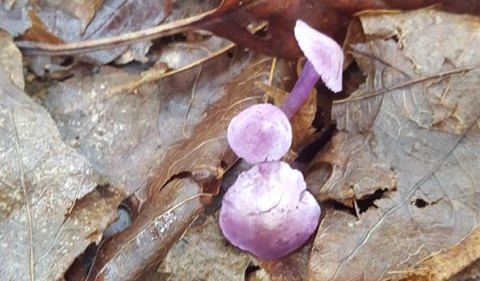

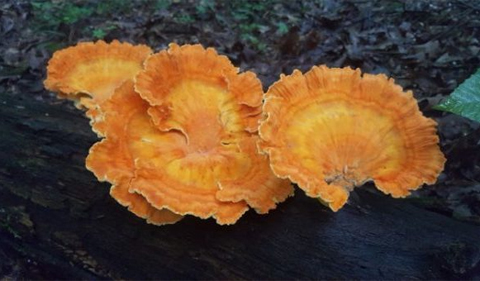
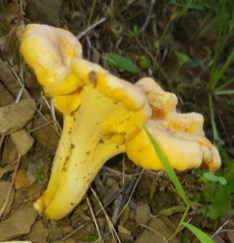
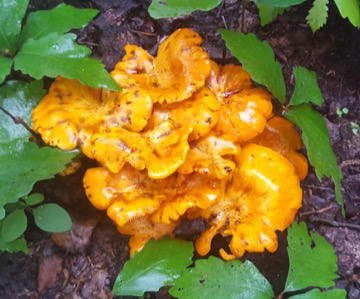
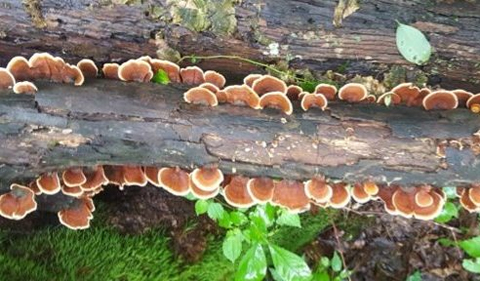
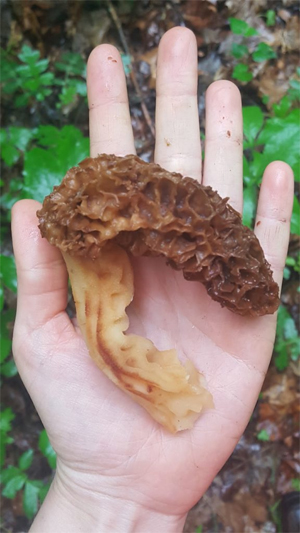
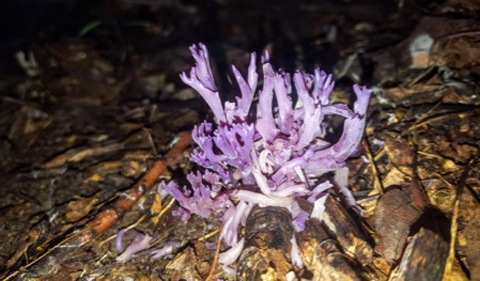













2 Comments